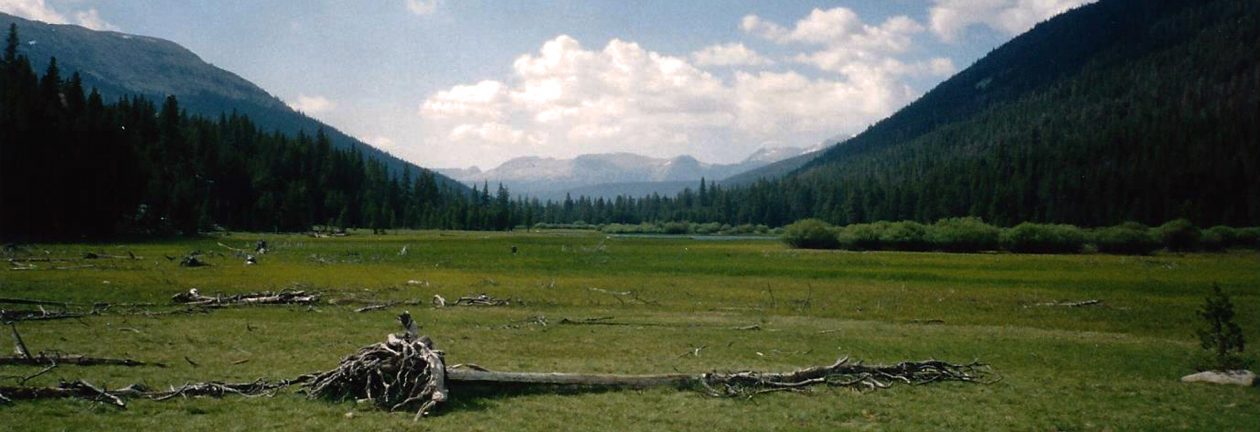THIRTY-SIXTH MOVEMENT: MACEDONIA
Ohrid, Macedonia
I have been traveling for one year today!
I got up today at 07:15 when the Spanish man staying in the same dorm room woke me up. I then dressed, started getting ready, and packed my bags. Next, I had breakfast in the hostel’s garden (omelet, bread, jam, and orange juice) before I finished getting ready to leave and taking my bags out of the room. At 08:00, the Spanish man and I gave our farewells and walked to the bus company near the railway station (and north of the center square). We arrived at the bus company at 08:25 and bought our tickets to Struga, Macedonia; I also exchanged 1,400 Lek for ten Euros since the Spanish man had told me I would have trouble ridding myself of excess Albanian Lek in any other country. We then waited until 09:20 for the 09:00 bus to arrive (traffic was noticeably worse today (Monday) than the last two days). Once the bus came to the stop, the Spanish man, a Japanese man, a young woman, an older woman, and I loaded up inside. We then rode the bus south-eastward out of Tirana and toward Macedonia. Along the way we passed by Petrelë Castle – one of the sites I had wished to visit yesterday, but was too tired to do so (it didn’t look like I had missed much). We continued on through the mountains and eventually stopped at a rest stop at 11:07, where I spent most of the remaining Albanian Lek I had on me on juice, a cold cappuccino drink, and a candy bar. After the bus received a wash, the other passengers and I loaded back on board and continued to the Macedonian border, which we reached at 12:20. Our passports were collected by an Albanian border guard, checked, and then given back to us. At the Macedonian checkpoint, our passports were once again collected, stamped, and given back to us (I never once had to get up from my bus seat to pass through to Macedonia).
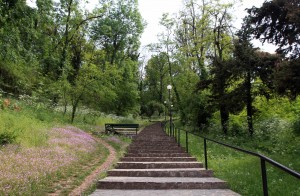
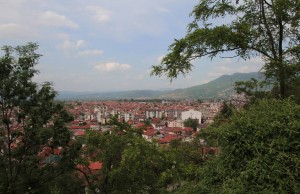
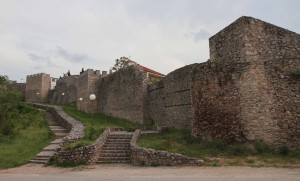
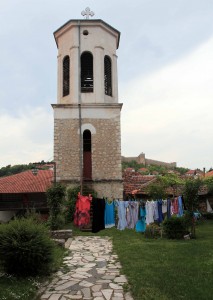
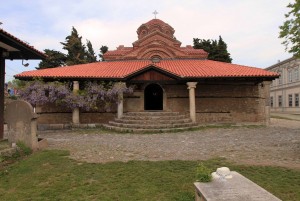
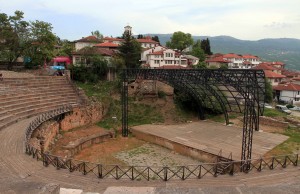
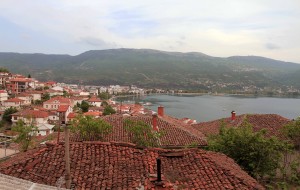
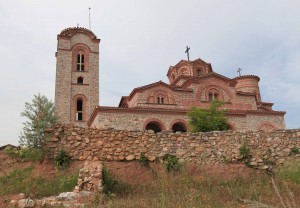
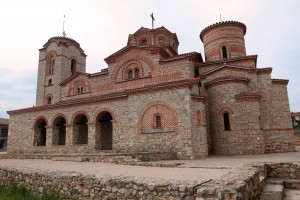
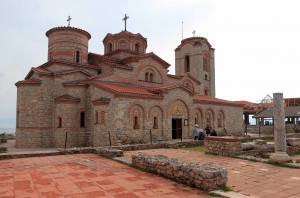
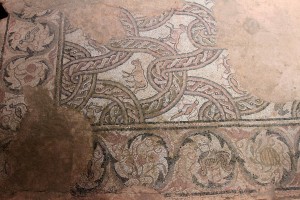
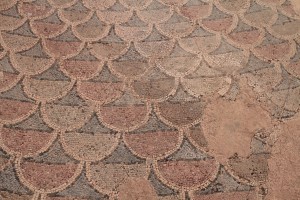
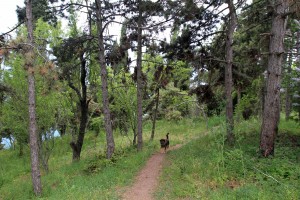
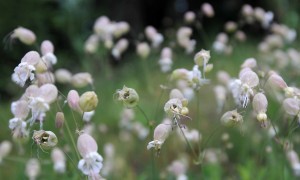
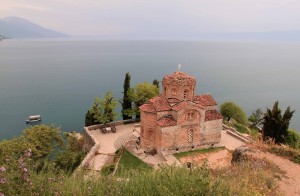
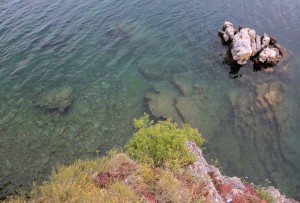
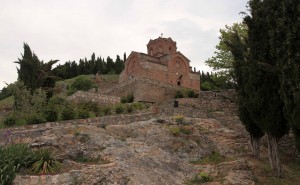
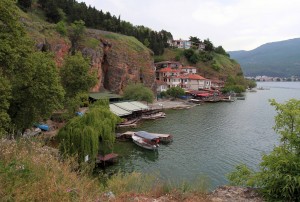
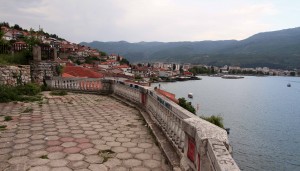
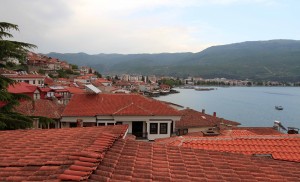
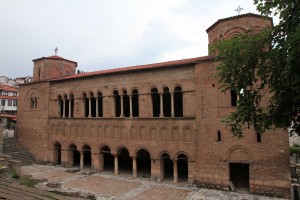
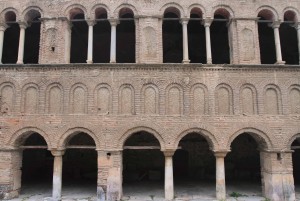
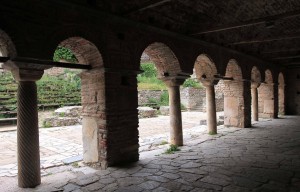
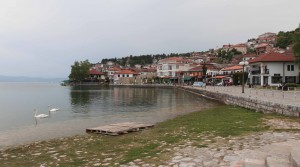
Just after 13:10, the bus continued on to Struga. Shortly after passing through the border, I was able to see Lake Ohrid, the deepest lake in the Balkans (at 288 meters) and one of the deepest and oldest in Europe. Soon we were in Struga and the Spanish man, the Japanese man, and I departed at the bus station. We then ignored the taxi drivers (who were all trying to charge us three to four times the going rate to Ohrid) and walked to the local bus stop in Struga (which took almost twenty minutes). On the way, I grabbed cash at an ATM and the other two gentlemen exchanged money. Once we finally made it to the bus stop, a man approached us to take his taxi/car to Ohrid, charging each of us 50 denar for the ride; this seemed fair since the bus would’ve cost 40 denar. So, we all agreed to take his car and not bother waiting for the local bus. Once inside the car, he and his friend drove us to the center of Ohrid – a relatively short drive that lasted about ten minutes. Once at the city center, the Japanese man departed us to walk to his hostel and I decided to stick around with the Spanish man to see if a bed was available at the hostel he had reserved a room with. We waited a little over a minute in the center before one of the hostel staff (a young man with a very Macedonian name (no, not Alexander, the other one) whose family owns and runs the place) came up to us, told me he had beds available, and walked us to the hostel (the driver of the taxi had called him prior to our arrival). We arrived at the hostel after a short walk, checked in, were given glasses of water, and then put our bags in to the room. Inside the hostel, I met two other American travelers (a young man from California and an older man from Virginia). Once I settled my bags in the room, I put on sunscreen, grabbed my sunglasses and camera, and walked out to see the historic town of Ohrid – a city that at one time had 365 churches (one for each day of the year). I first walked to the old city wall and entered in through the Upper Gate. I then walked to the Icon Gallery, which was closed (. . . Monday), but I did visit the church next to it, the Church of St. Bogorodica Perivlepta (also known as the “Mother of God Perivleptos Church”), which was built in 1295 AD; inside the church, I viewed all the frescoes I could see (scaffolding used for renovation work obscured quite a bit). I then exited the church and walked to the Antique Theater, which is a heavily restored theater from Hellenistic times. Next, I followed a road for a while before deciding to take a trail through the woods; this trail then led me to the Monastery of Saints Pantelimon and Plaosnik, which is believed to be where the first students of the Glagolitic alphabet (used to translate the Bible into Old Church Slavonic) were taught (the Glagolitic alphabet was created by the monk Saint Cyril (possibly with the aid of his brother Saint Methodius); later on, the Cyrillic alphabet was created by students of Saint Cyril (possibly Saint Clement) and was based on Greek uncial script and augmented by ligatures and by letters from the Glagolitic alphabet for consonants not found in Greek). Also, the Monastery of Saints Pantelimon and Plaosnik is believed to have been built when Saint Clement arrived in Ohrid (the beginning of the tenth-century AD). After entering inside the monastic grounds through my secret trail, I walked around the church (which was just reconstructed in 2002 AD and looked pretty new), entered inside, viewed the old Baptismal font and the mosaics surrounding it, walked past some ruins and columns, and then walked to the remnants of an old basilica (mostly just mosaics). After visiting the site and meeting up with the Spanish man who had just arrived there, I walked to the actual entrance and asked about buying a ticket (since I essentially snuck in), but the gate guard told me not to worry; I then thanked him and walked on. I then walked to the Church of St. John the Theologian at Kaneo, a thirteenth-century AD church built on a cliff overlooking Lake Ohrid, which makes it quite the picturesque spot (in fact a couple’s wedding photos were being taken there, as well as at the monastery before). I entered the church grounds, paid to enter inside the small church (not really worth it), and then walked up the hill above it, which had many Italian cypresses and wildflowers. I then walked back to the church and met the Californian man from the hostel. We talked and decided to walk together through the town of Ohrid. We first walked up to the edge of the cliff and then moved on to the Kaneo Settlement (the old quarter for poor fisherman, right by the lake and below the church). Next, we explored a stone structure built inside a gap in the rocky cliffs and found an outdoor theater above it with a great view of the city. We then walked back down to the boardwalk and continued on to the Church of Saint Sophia, an eleventh-century AD church, but it was closed for the day (it was past 17:00). After enjoying the church’s beautiful exterior, we walked to the port and then to a gyro restaurant, where we both bought large chicken gyros. We ate these as our dinner and then walked to a supermarket where I bought iced tea and a bottle of Macedonian beer to try out. We then returned to the hostel for the day. I drank my beer (it was not very good) and relaxed for a while. Later on, after I had finished going through my photographs for the day, the Californian man treated the Spanish man and me to a piano concert, where he played three original compositions he had created (they were quite good and he played them with passion and a certain amount of grace). After 23:00, I finally got to work typing out journal entries. While I was typing, the Californian man was busy drawing a mandala (which he does every now and then to improve his art); once he was done, he gave it to me to interpret; I told him what I saw in it (the soul (the inner dimension of the square), surrounded by comforts (love and music) and the universe (day/night and infinity) with opposing feelings and forces revolving around a person’s being (layers depicting arrows going in different directions)) and he seemed very pleased with my answer – this surfer/lifeguard/pianist from California is one of the more interesting people I’ve met in my life. I then finished typing the journal entry for today and went to sleep after 01:00.
